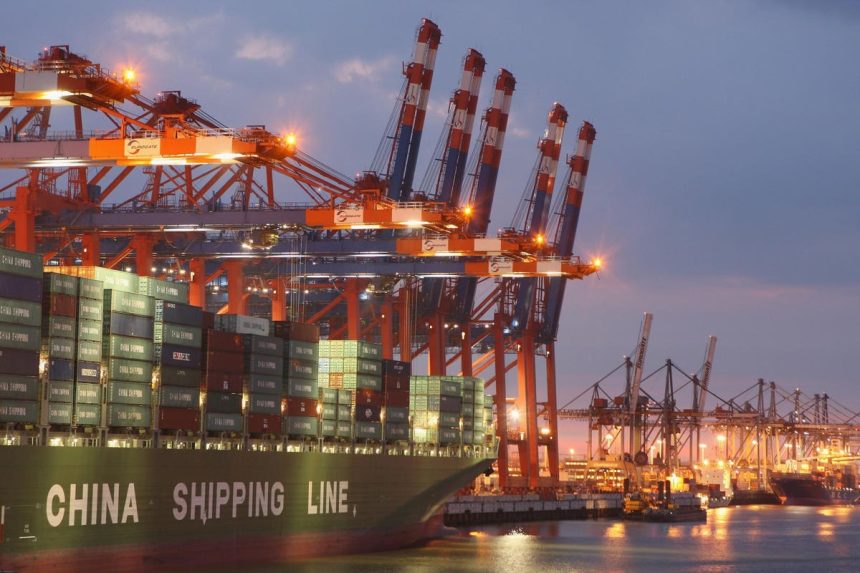For all the concern Washington and Americans rightly have about China and its regional and global agendas, that country’s economy is losing influence, especially in the United States. Not too long ago, China was America’s number-one trading partner. Today it stands in third place behind Mexico and Canada. Combined, India and Southeast Asia overshadow China’s importance on this side of the Pacific. Part of the change reflects the growing hostility between Washington and Beijing, but the story is broader than that. China has lost also as a natural consequence of its own development. The decline will likely continue for the foreseeable future.
Recent Commerce Department reports tell a big part of the story. China accounted for a mere 13.3% of all U.S. imports during the first six months of this year. That is down from a peak of 21.6% in 2017 and the lowest percentage since 2003 shortly after China joined the World Trade Organization (WTO). All ten of the major product groups tracked by Commerce showed a declining share for China between 2022 and 2023. Even exports of toys and games, a mainstay of China-U.S. trade for decades, lost share of U.S. imports of such products. Especially telling is China’s loss in electronics, a critically important factor in Beijing’s agenda. China’s share fell from 32% of American electronics imports last year to 27.9% in the first half of this year, quite a change in a single year.
Figures issued in Beijing confirm the Commerce Department’s read. Overall Chinese exports declined a whopping 14.5% in July from year-ago levels, a deterioration from June’s already troubling 12.4% decline. Shipments to the United States led the way down, falling 23% from year-ago level. Shipments to Europe and the Association of Southeast Asian Nations (ASEAN) each fell 21% in July. Were it not that demands from sanctions-beleaguered Russia raised China’s sales there 52% above year-ago levels in July, the picture for China’s still export-dependent economy would have been even more extreme.
Washington’s policies and pronouncements explain much of this deterioration. In this regard, China’s problems began in 2018, when then President Donald Trump imposed tariffs on a range of Chinese imports. He extended that range in 2019. Although Joe Biden seemed determined to reverse everything Trump had done, he kept the tariffs in place after he took office in 2021. Intensifying Washington’s anti-Beijing rhetoric well beyond that of his predecessor, Biden has also put limits on certain U.S. exports to China and advanced subsidies to any firm that would produce semiconductors in this country. More recently, he has placed limits on American investments in Chinese technology. Neither policy directly impinged on Chinese exports to America, except that many Chinese exports, especially electronics, depend on imports of parts from the United States.
But Washington’s hostility is not the whole story. Beijing has played a role in eroding China’s former reputation as a reliable place to source product. During the pandemic, Beijing interfered with export sales of masks and other needed medical supplies. American, European, and Japanese buyers lost still more confidence in the reliability of Chinese sourcing when for years after the pandemic had largely run its course, Beijing’s zero-Covid policies interrupted production and shipping in a manner that at times seemed arbitrary.
Of critical importance in this equation are rising costs in China. Chinese wages have outpaced wages in the west as well as in Japan, elsewhere in Asia and in Latin America. According to Beijing’s own National Bureau of Statistics, urban wages in China have over the last five years risen at an 8.6% average annual rate. That is almost twice the 4.4% average annual rate of wage gains in America. To be sure, American wages still stand high above Chinese wages, but the gap is much smaller than it once was and certainly less compelling to business decision makers. The rise in Chinese costs has become a major reason for western and Japanese producers and buyers to consider India, for instance, Latin America, and Southeast Asia. Especially Vietnam, the Philippines, Indonesia, and Mexico have lured investment and buying attention away from China.
The unfolding situation cries out for China to change its economic development model. For decades it relied on its reputation for cheap, reliable production to drive growth. Since that is no longer possible, China would do well to reorient its growth model toward a greater dependence on consumer needs and on domestic demand generally. Beijing in the past has paid lip service to such a need, but in practice the nation’s leaders have engaged more in rhetoric about a change than actual efforts to readjust the economy. Indeed, the rhetoric flew in the face of Xi Jinping’s also stated goal to become globally dominant in certain product areas. Given the contradictions of the past, it is far from apparent that Beijing is up to the challenge, even as it has clearly become more urgent.
Read the full article here









